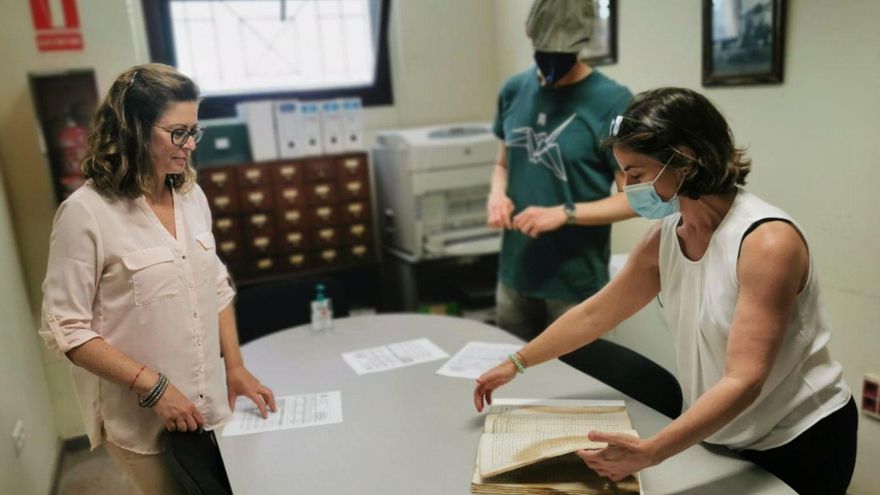
The northern Consistory values the completion of the first restoration work, carried out by specialists from the ULL, from funds from the Municipal Archives. A collaboration that, as announced by the mayor, Adolfo González (PP), “will continue to safeguard other studies, records or volumes that are in an advanced state of deterioration, putting the very information they contain at risk.”
The City Council of Los Realejos and the University of La Laguna collaborate in the restoration of historical documents of the Municipal Archive which, due to their poor state of conservation, are at risk of disappearing or losing part of the information they contain. This alliance to save the royal memory began with the municipal census of Realejo Alto in 1915 and will continue, as announced by the mayor, Adolfo González (PP), “to safeguard other studies, records or volumes that are in an advanced state of deterioration that puts at risk the very information they keep.
This collaboration takes place through the Fundación General Universidad de La Laguna and, in the words of the realejero president, “it represents a firm first step towards the recovery and consolidation of documents from this local government with the academic institution, a path in which we will continue working to preserve and recover our archive, because we understand that this means guaranteeing the documentary and patrimonial history of Los Realejos».
According to the first report of the specialists of the ULL, the document of the aforementioned registry presented “a very serious state of conservation, affected by microorganisms and decomposition from the support and, consequently, loss of information».
A padrón with 107 years
The aforementioned recovered volume, which has completed 107 years of history, collects all the information from the Realejo Alto census of 1915 in dimensions of 32 x 22.5 centimeters and 179 sheets sewn at the spine. The work team in charge of recovering the document has been directed by the doctor of the Department of Fine Arts of the Faculty of Fine Arts of the ULL and head of the Works of Art Analysis and Documentation Service, Elisa María Díaz González, and told with the support of the researcher in predoctoral training and conservator and restorer of Cultural Assets of the ULL Ania Rodríguez Maciel.
The Councilor for General Services of Los Realejos, Noelia González, details that this document is an administrative record of the residents of that municipality (one of the two that merged to form Los Realejos) in that year 1915, “described by names of residents of each dwelling, identification of each one of them, family relationships between members, or complementary data such as whether or not they knew how to write or read. A municipal information of “special historical relevance”, in González’s opinion, “which has deserved to be recovered through a specialized intervention that has stopped the alterations in the paper and now offers us guarantees of future conservation”.
The DHistorical documents of Realejo Alto and Realejo Bajo now allow us to know the local reality in the years prior to the merger, which took place on February 13, 1955, and which is considered “the event of greatest political relevance in the history of both municipalities and, therefore, in a essential to understand the reality of the Villa de Los Realejos, product of that historic unification”, and which has already turned 67 years old.
A delicate and laborious process
The restoration process of this type of historical documents is delicate and laborious. In the case of the 1915 census, it has taken about 4 months, in which three phases were carried out. The first focused on the detailed study of the volume, the physical characterization of the specimen and its description. The second was a non-destructive study by image with the application of different types of lighting that allowed recovering the legibility of texts and the characterization of inks present. The third phase included complementary tests that determined the restoration treatment in relation to the composition, the state of the paper and its physical alterations. In the future, the same will be done with other documents.















